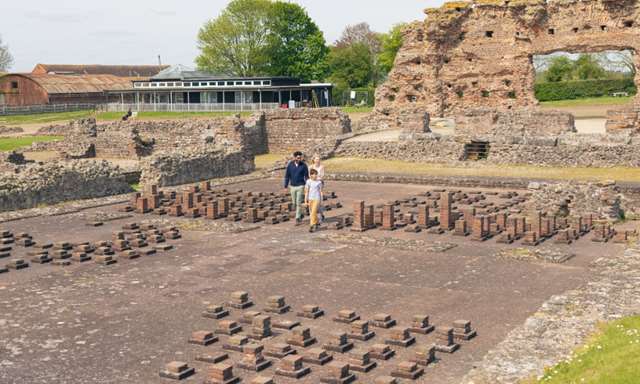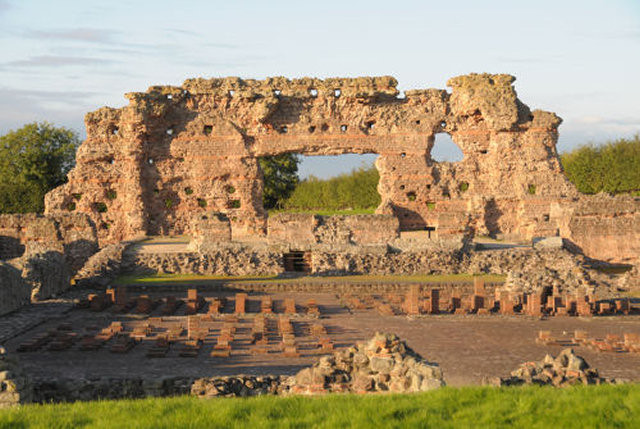Hidden within the peaceful countryside of Shropshire lies one of Britain’s most remarkable historical treasures—Wroxeter Roman City. Once known as Viriconium Cornoviorum, it was a powerful Roman settlement and at its height, the fourth largest Roman city in Britain. With its well-preserved ruins, recreated Roman townhouse, and intriguing past, Wroxeter offers an extraordinary glimpse into everyday life during the Roman occupation of Britain.
Wroxeter Roman City stands today as a monument to Rome’s far-reaching influence. From its beginnings as a military fortress around AD 55, it evolved into a flourishing urban centre complete with baths, forums, homes, and defences. Unlike more commercialised Roman cities like Bath or Londinium, Wroxeter retains a rustic authenticity that immerses visitors in a quieter, more reflective side of Roman Britain.
Discovering the History of Wroxeter Roman City
The origins of Wroxeter Roman City can be traced back to the Roman invasion of Britain when the city served as a legionary base for campaigns into Wales. Strategically placed near the River Severn and Watling Street, the city thrived as both a military and economic hub. Over time, it transitioned into a civilian settlement that mirrored the sophisticated structure of Rome itself—featuring grid-like streets, public baths, temples, and homes.
By the second century, Wroxeter had grown in stature and population, rivalling even some continental Roman cities. Archaeological evidence points to a population of several thousand, with tradesmen, soldiers, families, and officials calling the ancient Roman city their home. Today, the excavated remains give us vivid insight into how deeply the Roman way of life took root in Britain, influencing architecture, language, and culture that still echo through time.
The Roman City Baths and Reconstructed Townhouse
One of the standout features of Wroxeter Roman City is the large municipal bath complex, which served not only as a centre of hygiene but also as a social gathering space. These baths were designed with remarkable precision, using hypocaust heating systems to warm floors and water. Visitors can still walk through the remains of these ancient baths and see how innovative Roman engineering truly was.
Adding to the experience is the reconstructed Roman townhouse, built using tools and techniques from the era. This unique structure brings the past to life, allowing guests to step inside a Roman home as it might have appeared nearly 2,000 years ago. The attention to detail—from the frescoes to the furniture—offers a sensory journey into the heart of domestic Roman Britain.
What to Expect When Visiting Wroxeter Roman City

A visit to Wroxeter Roman City is both educational and relaxing. The site is managed by English Heritage and includes a visitor centre, small museum, gift shop, and picnic areas. Guided maps, detailed signage, and interactive displays make the ancient site accessible for all ages. There’s also a lovely rural backdrop, with views of the Wrekin and beyond.
According to Wroxeter Roman City reviews, visitors praise the peaceful atmosphere, informative exhibits, and friendly staff. Many find it less crowded than larger heritage sites, making it ideal for a more intimate and reflective historical experience. For photographers, Wroxeter Roman City photos reveal scenic ruins set against the green hills of Shropshire—a picturesque blend of nature and antiquity.
Exploring Related Roman Cities and Sites in Britain
While Wroxeter Roman City is undoubtedly special, it is part of a broader network of Roman settlements in Britain. Towns like Silchester Roman City Walls and Amphitheatre offer equally fascinating glimpses into Roman life. Located in Hampshire, Silchester retains a vast set of defensive walls and a well-preserved amphitheatre—both ideal companions to Wroxeter for anyone following a Roman trail through Britain.
Other notable sites include the Roman City Bath, with its iconic hot springs and temples, and York’s Roman city walls, which still encircle parts of the historic town. Whether you’re exploring ancient Roman city names or tracing routes on a Roman city map, Britain is rich in ruins that speak of a grand civilisation’s imprint on the land.
Roman City Property and Modern-Day Living Near History
Living near historical sites is becoming increasingly popular, with developments like Roman City Property offering homes adjacent to archaeological treasures. Areas around Wroxeter and Bath are particularly appealing, blending rural beauty with heritage. According to Roman City Property reviews, many buyers are drawn by the unique lifestyle and cultural significance of living near a place like Wroxeter Roman City.
Properties in these areas often reflect Roman influences in architecture and naming, adding a sense of identity and connection to the past. The proximity to iconic sites like Wroxeter Roman City not only adds aesthetic value but also serves as a constant reminder of the rich history beneath our feet.
Preserving the Past for Future Generations
Thanks to the efforts of English Heritage, Wroxeter Roman City continues to be preserved and studied. The site supports educational programmes for schools, hands-on workshops for history enthusiasts, and ongoing archaeological digs. These activities ensure that Wroxeter remains more than a relic—it is a living museum that deepens our understanding of Roman Britain.
Wroxeter is more than a tourist destination; it’s a cultural landmark that connects us to a world long gone but never forgotten. Whether you are a historian, a traveller, or a curious soul, a visit to Wroxeter Roman City is sure to enrich your knowledge and spark your imagination.
Frequently Asked Questions About Wroxeter Roman City
What was Wroxeter Roman City originally called?
It was known as Viriconium Cornoviorum and served as a major Roman settlement in western Britain.
Where is Wroxeter Roman City located?
Wroxeter is in Shropshire, near Shrewsbury, along the B4380 and close to the River Severn.
What are the Wroxeter Roman City opening times?
Opening times vary by season, but it’s generally open from 10am to 5pm. Check English Heritage for updates.
Are there maps available of Wroxeter Roman City?
Yes, you’ll find both physical maps at the site and digital guides available online.
How does it compare to Silchester or Bath?
Wroxeter is quieter and more immersive, while Silchester and Bath are larger and offer different types of Roman ruins.
You may also read: Best Areas to Buy Property in Inverness




